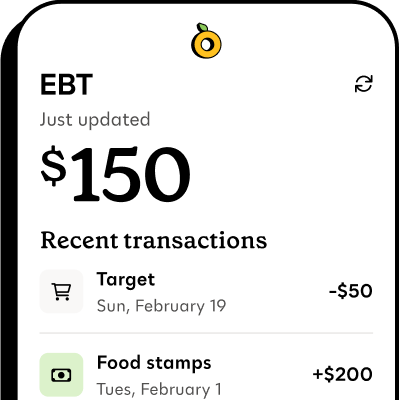
Yes—you may be able to qualify for SNAP while you’re in college. The Supplemental Nutrition Assistance Program (SNAP), sometimes called food stamps or EBT, can help eligible students afford groceries and stay healthy.
Not every student qualifies for benefits, but some can thanks to special rules. If you apply and qualify while still in college, the program works the same way as it does for everyone else—you’ll receive monthly deposits on an EBT card that you can use to pay for eligible food.

Propel is the #1-rated EBT balance checking app
Can college students get SNAP (food stamps)?#can-college-students-get-snap-food-stamps
Yes, some college students can qualify for SNAP benefits, but there are specific rules for students.
Generally, to qualify for SNAP, students must be enrolled at least half time in a higher education program (meaning college, university, or a trade or technical school), meet general SNAP program requirements, and also meet certain exemptions.
General SNAP eligibility rules:#general-snap-eligibility-rules
To qualify for SNAP, your household income must be at or below the income limits set by your state for your household size—for example, in California, a one-person household must earn less than $2,510 a month in order to qualify for SNAP benefits.
You also have to be a U.S. citizen or meet specific immigration status requirements ( undocumented immigrants can’t get SNAP).
Student SNAP eligibility rules:#student-snap-eligibility-rules
College students enrolled in school at least half time are eligible for SNAP if they meet certain exemptions. That may include you if you are:
- Under 18 or are age 50 or older
- Working at least 20 hours per week in paid employment
- Participating in a federal or state work-study program.
- Participating in an on-the-job training program
- Caring for a dependent child under age six
- Caring for a child aged six to eleven and going without the childcare you need to attend school and work 20 hours a week or participate in work study
- A single parent enrolled full-time in college and taking care of a child under 12
- Receiving Temporary Assistance for Needy Families (TANF) benefits.
- Unable to work due to physical or mental health reasons.
If you’re a student and you meet at least one of these exemptions in addition to the general SNAP eligibility criteria, you may qualify for benefits while you’re in school.
If you’re not sure if you are eligible, contact your local SNAP office or submit an application—that’s the best way to find out.
Which college students aren’t eligible for SNAP?#which-college-students-arent-eligible-for-snap
You may not be eligible for SNAP benefits if any of the following are true:
- You don't meet general SNAP eligibility requirements (like the income limits or immigration status rules)
- You don’t meet any of the exemptions listed above
- You are enrolled less than half-time in your higher-education program
- You live in a dormitory and receive the majority of your meals through a meal plan
How to apply for SNAP as a college student#how-to-apply-for-snap-as-a-college-student
Here's what you need to do to apply for SNAP while you're in school:
Step 1: Check your eligibility#step-1-check-your-eligibility
Before applying, check to see if you meet the SNAP eligibility requirements. Some states offer specific screening tools for college students.
Step 2: Gather any necessary documents#step-2-gather-any-necessary-documents
Make sure you have any documents your state requires for SNAP, which may include:
- Proof of identity (like a driver's license or student ID)
- Proof of income (like pay stubs or financial aid letters).
- Proof of enrollment and student status
- Documentation of any exemptions (like proof of your work-study participation or childcare responsibilities).
Step 3: Submit an application#step-3-submit-an-application
You can apply for SNAP benefits through your state’s online portal, in person at your local SNAP office, or by mail—whichever is easiest for you (and offered in your state).
Step 4: Complete a SNAP interview#step-4-complete-a-snap-interview
After submitting your SNAP application, you'll be contacted to complete an interview, which in many states can be conducted in person, by phone, or over video.
During the SNAP interview, a caseworker will verify your information and determine your eligibility. Be prepared to discuss your income, expenses, and any exemptions you may qualify for.
Other benefits and discounts for low-income college students#other-benefits-and-discounts-for-low-income-college-students
1. Amazon Prime Student Discount#1-amazon-prime-student-discount
When you join Prime Student and verify your status as a student, you can get free Amazon Prime for a six-month trial period, and then a discounted rate for as long as you’re a student. Prime Student gives you access to free shipping, streaming, and exclusive deals.
2. On-campus resources#2-on-campus-resources
Many colleges have support services for students who are struggling financially. This may include:
- On-campus food pantries or food banks
- Emergency grants or housing assistance
- Free or reduced-price meal programs
- Counseling and referrals to local assistance programs
3. Local discounts#3-local-discounts
Depending on where you live, you might also be eligible for discounts on public transportation, utility bills, or local attractions with your student ID card or EBT card. Some states even offer discounted museum or zoo admission for students or people with EBT cards.


